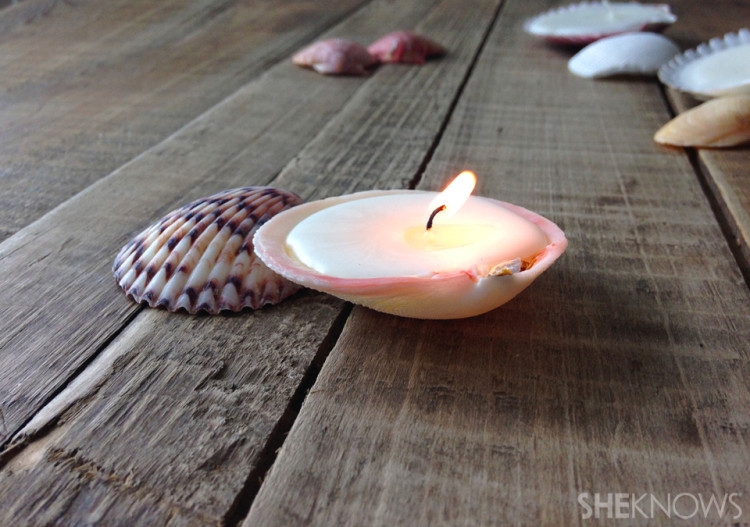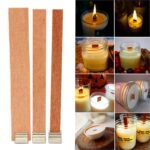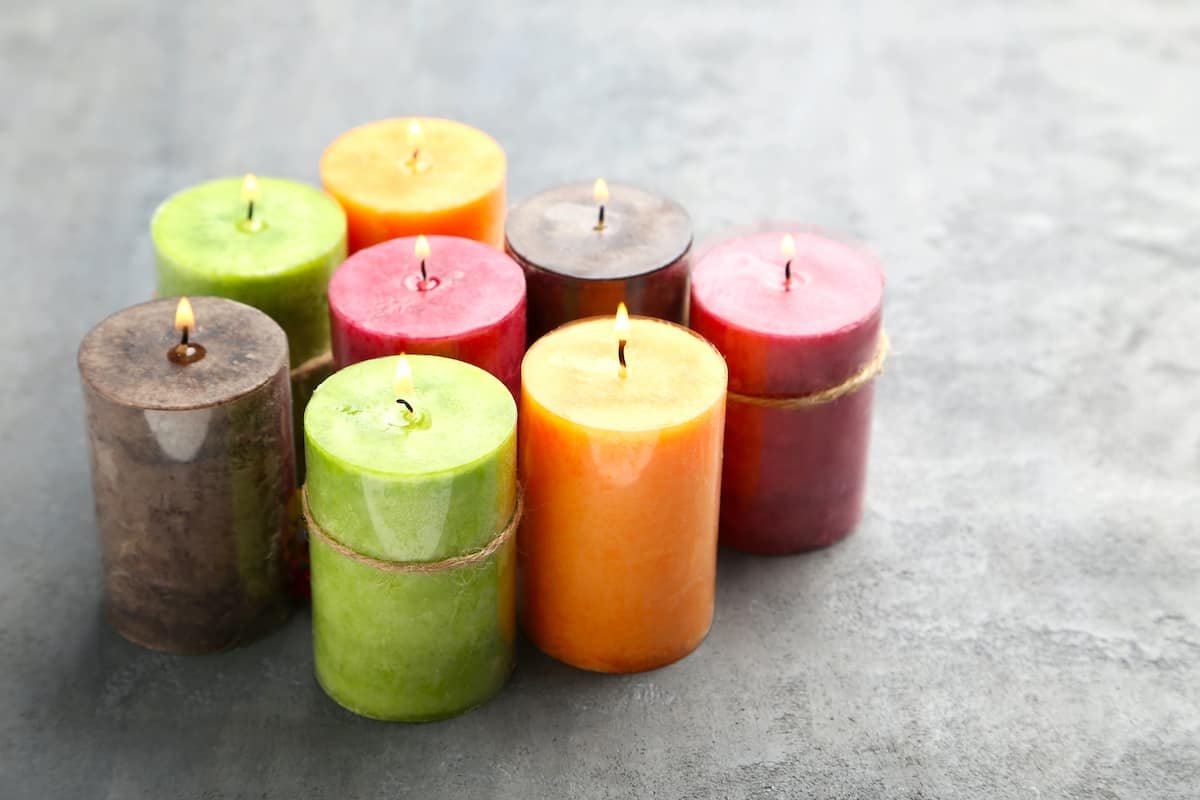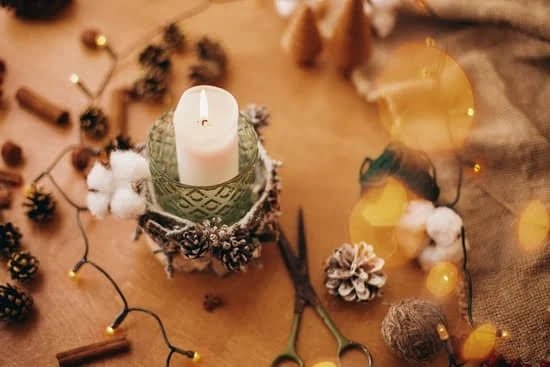Are you interested in learning the art and science behind candle making? The growing popularity of DIY candle making has sparked a renewed interest in this age-old craft, and it’s easier than ever to get started. Whether you’re looking to create custom candles for personal use or as a potential business venture, understanding the material required for candle making is an essential first step.
Candle making is both a creative and scientific process that involves the use of various tools and materials to produce beautiful, fragrant products. As we delve into the essential tools for candle making, we will highlight their purpose and importance in the intricate process. From different types of waxes and fragrance oils to colorants, molds, and safety precautions, there are numerous aspects to consider when embarking on a candle making journey.
Exploring the world of candle making offers endless possibilities for experimentation and creativity. By understanding the foundational materials required for candle making-such as wicks, containers, and safety measures-you can confidently begin this fulfilling and rewarding DIY endeavor. In this article, we will cover everything you need to know about getting started with candle making, from basic tools to best practices for creating your very own custom candles.
Essential Tools for Candle Making
When it comes to creating beautiful, aromatic candles at home, having the right tools is essential for a successful and enjoyable candle making experience. From measuring and mixing to pouring and setting, each step of the candle making process requires specific tools to ensure a high-quality finished product. Here are the essential tools required for candle making:
Double Boiler or Melting Pot
To melt wax effectively and safely, a double boiler or melting pot is crucial. This tool allows for even heating and prevents the wax from scorching or burning, resulting in a smooth and consistent texture for your candles.
Thermometer
A thermometer is necessary for monitoring the temperature of the melted wax, as different types of wax require specific heating ranges. By using a thermometer, you can avoid overheating and ensure that the wax is at the optimal temperature for adding fragrance oils, essential oils, and colorants.
Measuring Tools
Accurate measurements are key to achieving consistent candle formulas. Measuring cups, spoons, or scales are essential for precisely measuring waxes, fragrance oils, colorants, and other additives.
Stirring Utensils
Stirring utensils such as metal or silicone spatulas are needed to blend fragrances, oils, and colorants evenly into the melted wax. These utensils also help to mix in any additional additives thoroughly.
Pouring Pitcher or Container
A pouring pitcher with a spout or a heat-resistant glass container is necessary for transferring the melted wax into molds or containers without making a mess. The design of these containers facilitates controlled pouring and minimizes spills.
By having these essential tools on hand, DIY candle makers can confidently embark on their candle making journey knowing they have everything they need to create stunning homemade candles. Whether you’re new to candle making or looking to elevate your craft, investing in quality tools will set you up for success in this creative and rewarding endeavor.
Different Types of Waxes
When it comes to candle making, choosing the right wax is crucial for achieving the desired results. There are several types of waxes commonly used in candle making, each with its own unique characteristics and benefits. Understanding the differences between these waxes can help you make informed decisions when embarking on your DIY candle making projects.
Soy Wax
Soy wax has gained popularity in recent years due to its natural and renewable properties. Made from soybean oil, this wax burns cleaner and longer than traditional paraffin wax. It also has a lower melting point, which makes it easier to work with for beginners. Additionally, soy wax is known for holding fragrance oils well, resulting in strong scent throw in candles.
Beeswax
Beeswax is another popular choice for candle making due to its natural origins and pleasant honey-like aroma. This type of wax burns slowly and emits a subtle sweet scent when lit. Beeswax candles are often favored for their beautiful natural color and minimal processing.
Paraffin Wax
Paraffin wax has been a staple in the candle making industry for many years due to its affordability and versatility. It holds color well and provides a smooth finish, making it suitable for various candle designs. However, some may prefer natural alternatives over paraffin wax due to its petroleum-based origins.
Each type of wax has its own set of advantages and drawbacks, so it’s essential to consider your specific needs and preferences when selecting the appropriate material required for candle making. Whether you prioritize sustainability, scent throw, or cost-efficiency, there’s a wax out there that aligns with your goals. Conducting thorough research and experimenting with different waxes can help you discover the perfect fit for your homemade candles.
Fragrance Oils and Essential Oils
When it comes to making candles, one of the most exciting parts is choosing the fragrance or essential oil that will give your creation its unique scent. Both fragrance oils and essential oils play a crucial role in candle making, as they are responsible for providing the pleasant aroma that fills the room when the candle is lit.
Fragrance oils are synthetic scents that are specifically designed for candle making. They come in a wide variety of scents, from floral and fruity to woodsy and spicy. On the other hand, essential oils are natural plant extracts that are highly concentrated and used for their therapeutic properties. Many people prefer using essential oils in their candles because they enjoy the natural aromas and potential health benefits associated with these oils.
When selecting fragrance or essential oils for your candles, it’s important to consider not only personal preference but also the compatibility of the oil with the wax being used. Some scents may work better with certain types of wax, while others may not mix well and affect the candle’s burning performance.
| Fragrance / Essential Oil | Description |
|---|---|
| Lavender | Calming, floral scent known for its relaxation properties. |
| Vanilla | Sweet, comforting aroma often used in dessert-scented candles. |
| Lemongrass | Refreshing, citrusy scent commonly chosen for its energizing effect. |
Colorants and Dyes
When it comes to candle making, colorants and dyes play a crucial role in creating visually appealing and vibrant candles. Whether you prefer bold, eye-catching colors or soft, pastel hues, the right choice of colorant can make all the difference in the final product. The market offers a wide range of colorants and dyes specifically formulated for candle making, ensuring that you have plenty of options to choose from in order to achieve your desired look.
One of the most popular types of colorants used in candle making is liquid candle dye. This type of dye is highly concentrated, allowing you to achieve intense colors with just a few drops. It is also easy to mix, making it ideal for experimenting with different shades and creating custom colors for your candles.
Powdered candle dye is another option that provides vibrant colors and allows for greater control over the intensity of the hue. Additionally, natural dyes derived from plants and minerals are becoming increasingly popular among eco-conscious crafters who want to create candles using sustainable materials.
In addition to choosing the right type of colorant, it’s important to consider the behavior and performance of the dye when mixed with different types of waxes. Some colorants may not blend well with certain waxes or may affect the burning characteristics of the candle. As such, it’s essential to conduct thorough research and experiments to determine which colorants work best with the specific wax you are using for your candle making project.
| Type | Description |
|---|---|
| Liquid Candle Dye | Highly concentrated and easy to mix, allowing for intense colors with just a few drops. |
| Powdered Candle Dye | Provides vibrant colors while offering greater control over intensity; ideal for custom shades. |
| Natural Dyes | Derived from plants and minerals, they are popular among eco-conscious crafters for sustainable candle making. |
Candle Wicks and Wick Holders
When it comes to candle making, choosing the right wick and wick holder is crucial for achieving the desired burning behavior in your homemade candles. Here’s a breakdown of the essential tools you’ll need in this category:
- Candle Wicks: The wick serves as the pathway for the melted wax to travel up to fuel the flame. It’s essential to choose a wick that is appropriate for the type of wax and container you’re using. Cotton wicks are a popular choice for many candle makers due to their clean and consistent burn.
- Wick Holders: Wick holders are used to keep the wick centered in the candle as it sets and while it burns. They come in various forms, including metal sustainer tabs and plastic wick holders. The right holder will ensure that your candle burns evenly and reduces soot or smoke production.
In addition to understanding the purpose of these tools, it’s important to consider their impact on the overall quality of your homemade candles. Choosing the wrong wick or neglecting proper placement can result in uneven burning, excessive smoking, or tunneling-where only a small portion of the candle melts with each use.
Exploring different types of wicks and holder options can provide insight into how they influence the performance of your candles. Keeping these factors in mind will help you create safe, efficient, and visually appealing candles with every project you undertake. Whether you’re making container candles, pillar candles, or specialty shaped candles, selecting suitable wicks and holders is an essential part of successful candle making.
Molds and Containers
When it comes to candle making, choosing the right molds and containers is essential for achieving the desired look and functionality of your candles. There are a variety of options available, each with its own unique features and benefits. Here are some of the most common molds and containers used in candle making:
- Glass Jars: Glass jars are a popular choice for container candles due to their transparency, which allows for creative layering of different colored waxes. They also provide a sleek and modern look when used as candle containers.
- Tin Containers: Tin containers are often used for travel or outdoor candles due to their durability and portability. They come in various shapes and sizes, making them versatile for different candle designs.
- Silicone Molds: Silicone molds are perfect for creating custom-shaped candles such as hearts, stars, or even novelty items like fruits or animals. Their flexibility makes it easy to pop out the finished candles without damaging their shape.
Choosing the right mold or container ultimately depends on the type of candles you want to make. For example, if you’re creating scented jar candles for home decor, glass jars may be the best option. On the other hand, if you’re planning to make decorative shaped candles as gifts or party favors, silicone molds would be more suitable.
It’s important to consider not only the aesthetic appeal but also the practicality of your chosen mold or container. Factors such as heat resistance, ease of use, and how well they hold fragrance should all be taken into account when making your selection. Investing in high-quality molds and containers will ensure that your homemade candles turn out beautifully every time.
Safety Precautions and Best Practices
When it comes to candle making, safety should always be the top priority. Working with the material required for candle making can pose certain risks if proper precautions are not taken. It is important to handle these materials with care and follow best practices to ensure a safe and enjoyable candle making experience.
One of the most important safety precautions when working with candle making supplies is to wear protective gear, such as gloves and safety glasses, to protect your skin and eyes from any potential hazards. Additionally, it is crucial to work in a well-ventilated area to prevent inhalation of fumes from melted wax or fragrance oils. This can help prevent respiratory issues and keep you safe while crafting your candles.
Another best practice when working with the material required for candle making is to never leave melted wax unattended. It is essential to closely monitor the melting process and ensure that all equipment is in good working condition to prevent accidents or fires. Furthermore, it is advisable to have a fire extinguisher nearby as an extra precautionary measure in case of emergencies.
Lastly, proper storage of candle making supplies is key to maintaining a safe working environment. It is important to store flammable materials such as waxes and oils in a cool, dry place away from direct sunlight and sources of heat. This will help prevent any potential hazards and prolong the shelf life of your supplies.
By following these safety precautions and best practices, you can create beautiful homemade candles while ensuring a safe and enjoyable candle making experience. Remember that being mindful of safety measures not only protects you but also enhances the overall enjoyment of candle making.
Conclusion and Next Steps
In conclusion, candle making is not only a creative and enjoyable hobby but also a practical skill that can result in beautiful, customized candles for personal use or gifting. As discussed throughout this article, the material required for candle making encompasses a range of essential tools, waxes, fragrance oils, colorants, wicks, molds, and safety precautions. Each of these components plays a crucial role in the candle making process and contributes to the quality and aesthetic appeal of the final product.
After familiarizing yourself with the essential materials and tools needed for candle making, it’s time to take the next steps in your journey. Whether you’re interested in creating simple container candles for home decor or experimenting with intricate molded designs and unique scents, there are numerous resources available to guide you further. From online tutorials and forums to local workshops and supply stores, there are plenty of opportunities to expand your knowledge and expertise in this craft.
So why wait? Start your candle making journey today by gathering the necessary supplies and experimenting with different techniques. Whether you’re aiming to create soothing aromatherapy candles using essential oils or vibrant, decorative pieces with colorful dyes, the possibilities are endless. With proper research, practice, and dedication to safety measures and best practices, you can become proficient in this art form and take pride in producing your own handcrafted candles.
Frequently Asked Questions
What Are the Raw Materials Used in Candle Industry?
The raw materials used in the candle industry include wax (such as paraffin or soy), wicks, fragrance oils, and dyes. These materials are essential for creating different types of candles with varying scents and colors.
What Is the Formula for Candle Making?
The formula for candle making typically involves melting the wax, adding fragrance oils and dyes if desired, then carefully pouring the liquid wax into a container with a pre-tabbed wick. The process also requires appropriate temperature control to ensure the candles solidify correctly.
Is It Cheaper to Make Your Own Candles?
Making your own candles can be cheaper than buying them, especially if you purchase raw materials in bulk. By sourcing ingredients at lower prices, DIY candle makers can create high-quality products at a fraction of the cost of store-bought alternatives. Plus, it allows for customization and creativity in crafting unique candles.

Welcome to my candle making blog! In this blog, I will be sharing my tips and tricks for making candles. I will also be sharing some of my favorite recipes.





